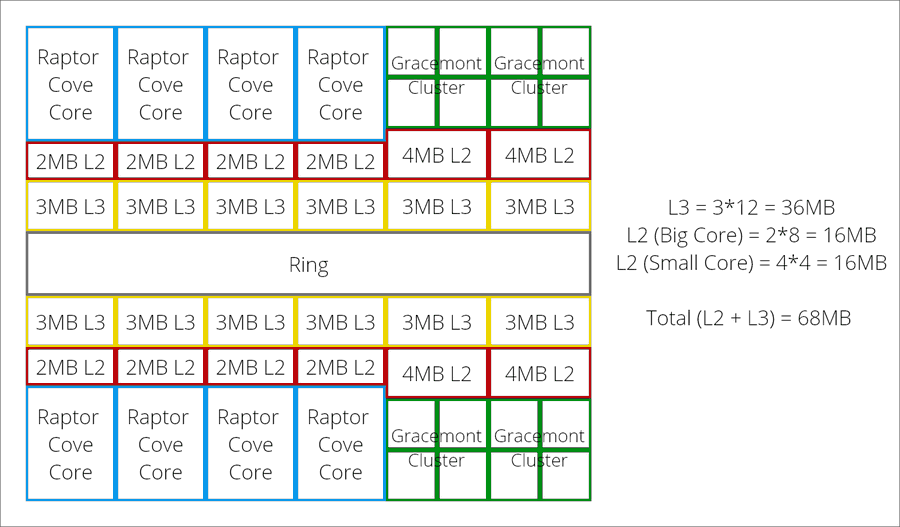The increase in cache size, which is rumored to be up to 68MB, may result in a huge performance boost.
The current leak started with OneRaichu on Twitter, who tweeted a vague message: “68M cache is interesting.” OneRaichu then clarified that the 68MB cache in question is said to belong to an Intel Raptor Lake processor, indicating a massive increase in cache size. This would translate to an improvement in overall CPU performance.
Although the original leaker didn’t follow up with additional information, another user (Olrak29_) chimed in with a diagram that better explains the alleged core configuration of Raptor Lake CPUs. With a rumoured combined cache (L2+L3) of 68MB, the CPU will have a somewhat complex cache distribution.

If the diagram is correct, each Raptor Golden Cove Core has 2MB of L2 cache and 3MB of L3 cache.
The efficiency Gracemont core clusters, each consisting of four E-cores, have 4MB of L2 cache and 3MB of L3 cache. As Intel Raptor Lake CPUs may have up to eight performance cores and four efficiency core clusters, this adds up to a maximum of 68MB. In a reply to the diagram, another user shared the mathematical operation required to achieve that result: 2*8+4*4+3*12.
This would be a huge increase in cache size for Raptor Lake CPUs compared to Alder Lake.
It would give Intel’s 13th-gen processors an up to 60 per cent larger L2 cache in the Golden Cove cores and a doubled L2 cache in the Gracemont core clusters. The L3 cache per object may remain unchanged, but the two extra Gracemont core clusters will increase their size to 36MB.
When AMD upgraded the L3 cache upon switching from Zen+ to Zen 2, the gaming boost was undeniable. We may be looking at a similar jump going from Intel Alder Lake to Raptor Lake.
Raptor Lake could launch as early as this year as Chipzilla has to do something to stop AMD which is about to release its Zen 4.




